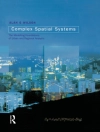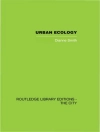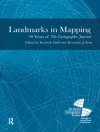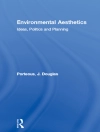The SAGE Handbook of Nature offers an ambitious retrospective and prospective overview of the field that aims to position Nature, the environment and natural processes, at the heart of interdisciplinary social sciences.
The three volumes are divided into the following parts:
INTRODUCTION TO THE HANDBOOK
NATURAL AND SOCIO-NATURAL VULNERABILITIES: INTERWEAVING THE NATURAL & SOCIAL SCIENCES
SPACING NATURES: SUSTAINABLE PLACE MAKING AND ADAPTATION
COUPLED AND (DE-COUPLED) SOCIO-ECOLOGICAL SYSTEMS
RISK AND THE ENVIRONMENT: SOCIAL THEORIES, PUBLIC UNDERSTANDINGS, & THE SCIENCE-POLICY INTERFACE
HUNGRY AND THIRSTY CITIES AND THEIR REGIONS
CRITICAL CONSUMERISM AND ITS MANUFACTURED NATURES
GENDERED NATURES AND ECO-FEMINISM
REPRODUCTIVE NATURES: PLANTS, ANIMALS AND PEOPLE
NATURE, CLASS AND SOCIAL INEQUALITY
BIO-SENSITIVITY & THE ECOLOGIES OF HEALTH
THE RESOURCE NEXUS AND ITS RELEVANCE
SUSTAINABLE URBAN COMMUNITIES
RURAL NATURES AND THEIR CO-PRODUCTION
This handbook is a key critical research resource for researchers and practitioners across the social sciences and their contributions to related disciplines associated with the fast developing interdisciplinary field of sustainability science.
Tabela de Conteúdo
Introduction to the Handbook – Terry Marsden
PART 01: SUSTAINABILITY AND GOVERNANCE: SOME STARTING POINTS
Chapter 1: Introduction to Part One : Sustainablity and Governance: some starting points. – Terry Marsden
Chapter 2: Re-reading sustainability through the Triple Helix model in the frame of a systems perspective – Francesca Farioli, Sergio Barile, Marialuisa Saviano, Francesca Iandolo
Chapter 3: Environmental Philosophy and Environmental Ethics for Sustainability – Robin Attfield
Chapter 4: The role of social science in nature-society transitions – Kjell Andersson and Stefan Sjöblom
Chapter 5: Understanding the evolving relationship between tourism and nature in an era of sustainability – Alison M. Gill
Chapter 6: Governance Mechanisms as Promoters of Governability: a Political Science Perspective on Institutional Complexity – Stefan Sjöblom and Kjell Andersson
Chapter 7: Nature Governance: A multimodal view – Abid Mehmood
Chapter 8: Purposeful institutional change for Adaptive Governance of Natural Resources: How to Cater for Context and Agency? – Andreas Thiel and Farhad Mukhtarov
PART 02: NATURAL AND SOCIO-NATURAL VULNERABILITIES: INTERWEAVING THE NATURAL & SOCIAL SCIENCES
Chapter 9: Introduction to Part Two: Natural and Socio-natural Vulnerabilities: Interweaving the natural and social sciences – Wendy Larner
Chapter 10: Human Vulnerability and Resilience to Environmental Hazards – Ilan Kelman, JC Gaillard and Ben Wisner
Chapter 11: Epistemic politics of climate change – Martin Mahony
Chapter 12: A new biopolitics of environmental health: permeable bodies and the Anthropocene – Becky Mansfield
Chapter 13: Nature, Critique, Ontology, and Decolonial Options: Problematising ‘The Political’ – Mark Jackson
PART 03: SPACING NATURES: SUSTAINABLE PLACE MAKING AND ADAPTATION
Chapter 14: Introduction to Part Three: Spacing Natures: Resourceful and Resilient Community Environmental Practice – Alex Franklin
Chapter 15: Spacing Conservation Practice: Place-Making, Social Learning, and Adaptive Landscape Governance in Natural Resource Management – Daniel R. Williams
Chapter 16: Politics of Connectivity: The Relevance of Place-Based Approaches to Support Sustainable Development and the Governance of Nature and Landscape – L.G. Horlings
Chapter 17: Resilience of Resource Communities: Perspectives and Challenges – Juha Kotilainen
Chapter 18: Sustainability, Justice, and the Problem of Scale: Place-making as a ‘Multi-scalar Fix’ in Urban Environmental Politics – Joseph Pierce
PART 04: COUPLED AND (DE-COUPLED) SOCIO-ECOLOGICAL SYSTEMS
Chapter 19: Introduction to Part Four: Utilising a Coupled Social-Ecological Systems Approach for Place Based Analysis – Susan Baker and Isabelle Durance
Chapter 20: Resilience and Adaptation in Coupled Natural-Social Systems: A Place-Based Perspective – Susan Baker and Isabelle Durance
Chapter 21: Coupled Social-Ecological Systems: Insights from Seagrass Meadows in the Turks and Caicos Islands – Jessica Paddock, Susan Baker, Leanne Cullen-Unsworth, Alastair Smith, Richard Unsworth
Chapter 22: Ecological localism – re-coupling people place and nature – Mark Robins and Adrian Southern
PART 05: RISK AND THE ENVIRONMENT: SOCIAL THEORIES, PUBLIC UNDERSTANDINGS, & THE SCIENCE-POLICY INTERFACE
Chapter 23: Introduction to Part Five: Risk and rationality: the “frame problem” revisited, from the laboratory to the public sphere – Brian H Mac Gillivray and Nick F Pidgeon
Chapter 24: Social theories of risk and the environment – Ortwin Renn
Chapter 25: Decision-making about the environment – Victoria Campbell-Arvai, Douglas Bessette, Robyn Wilson and Joseph Arvai
Chapter 26: Public Engagement with Risk and the Science-Policy Interface: A Perspective on Techno-Visionary Science and Innovation – Phil Macnaghten
PART 06: HUNGRY AND THIRSTY CITIES AND THEIR REGIONS
Chapter 27: Introduction to Part Six: Feeding Hungry and Thirsty Cities: An Introduction – Roberta Sonnino and Ana Moragues-Faus
Chapter 28: Urban Food Governance in the Global North – Wendy Mendes and Roberta Sonnino
Chapter 29: Urban food security in developing countries: Policy trajectories for urban Africa – Jane Battersby
Chapter 30: Conflicting Demands, Urban Dilemmas and Narrow Thinking about Water: Political Necessity and the Possibilities of Change – Antonio A R Ioris
Chapter 31: The role of small urban centres in food security and rural transformations – Cecilia Tacoli
PART 07:CRITICAL CONSUMERISM AND ITS MANUFACTURED NATURES
Chapter 32: Introduction to Part Seven: Sustainability and inequality: reviewing critical issues in understanding consumer – food relationships in Global Modernity – Gert Spaargaren and Peter Oosterveer
Chapter 33: Supermarkets, ‘the consumer’ and responsibilities for sustainable food – David Evans, Daniel Welch and Joanne Swaffield
Chapter 34: The Retail Sector And Sustainable Food Provision In Thailand – Kanang Kantamaturapoj
Chapter 35: Consumers, food security, and transformations in food retail in Vietnam – Sigrid Wertheim-Heck
Chapter 36: Accessing sustainable food: new figurations of food provision in the making? – Peter Oosterveer and Gert Spaargaren
PART 08: GENDERED NATURES AND ECO-FEMINISM
Chapter 37: Introduction to Part Eight: Gendered Nature and Ecofeminism – Susan Buckingham
Chapter 38: Across the Development Divide: A North-South Perspective on Environmental Democracy – Seema Arora-Jonsson
Chapter 39: Men at Work: Scientific and Technical Solutions to the “Problem” of Nature – Joane Nagel
Chapter 40: Refiguring Motherhood and Maternalism in Ecofeminism – Niamh Moore
Chapter 41: What do women and nature have in common: affinity, contingency, or material relation? – Mary Mellor
PART 09: REPRODUCTIVE NATURES: PLANTS, ANIMALS AND PEOPLE
Chapter 42: Introduction to Part Nine: Making nature productive: stories of farmed and wild salmons, cow’s choice, good bugs, earthworms and gardening – Mara Miele
Chapter 43: Redistributing labour in Automated Milking Systems and the more-than-human (co)production of dairy farming – Christopher Bear and Lewis Holloway
Chapter 44: Accumulating goods: Valuing practices in the production of Insects for Crop Protection – Stephanie Lavau
Chapter 45: Modes of Naturing: or stories of salmon – Heather Swanson, John Law and Marianne E. Lien
Chapter 46: Global Worming: politics of nature and earth(worm) systems – Filippo Bertoni
Chapter 47: Urban community gardening: producing new spaces of social nature in the city – Paul Milbourne
PART 10: NATURE, CLASS AND SOCIAL INEQUALITY
Chapter 48: Introduction to Part Ten: What nature and which society?: The complexities of nature-society relationships in the Anthropocene – Shonil Bhagwat
Chapter 49: The role of sacred natural sites in conflict resolution: lessons from Wonsho sacred forests of Sidama, Ethiopia – Zerihun Doffana
Chapter 50: Social equity in the context of forest conservation. Insights from REDD+ projects in Cambodia and Kenya. – Christina Ender
Chapter 51: Non-native invasive species: Nature, society and the management of novel nature in the Anthropocene – Shonil Bhagwat
Chapter 52: Community places, contested spaces: a political ecology of Italian sacred natural sites between cooperation and conflict – Fabrizio Frascaroli
Chapter 53: Marginalisation of Traditional Groups and the Degradation of Nature – Emma Shepheard-Walwyn
PART 11: BIO-SENSITIVITY & THE ECOLOGIES OF HEALTH
Chapter 54: Introduction to Part Eleven: Biosensitivity – an integrative approach to the health of people and planetary systems – Anthony Capon
Chapter 55: Adopting a public health ecology approach to a key food security issue: apiary, bio-diversity and conservation – Ferne Edwards, Jane Dixon and Ruth Beilin
Chapter 56: Nature contact and human health – Howard Frumkin
Chapter 57: Health, population, limits and the decline of nature – Colin D Butler and Kerryn Higgs
Chapter 58: A Bio-Sensitive and Nutritious Food Source: The Kangaroo and Troubled Nature–Society Relations – Michelle Young and Jane Dixon
Part 12: THE RESOURCE NEXUS AND ITS RELEVANCE
Chapter 59: Introduction to Part Twelve: The Resource Nexus and its Relevance – Raimund Bleischwitz
Chapter 60: A Water Perspective on the Water–Energy–Food Nexus – Carole Dalin
Chapter 61: Resources Nexus: The Importance for Asia and the Role of Institutions – Adnan A. Hezri and Michelle Kwa
Chapter 62: Fertilizers: Food Security and the Resource Nexus – Minpeng Chen, Yunfan Wan and Li Yue
Chapter 63: Industrial Symbiosis – a Bottom-Up Business Response to Nexus Challenges – Teresa Domenech Aparisi
Chapter 64: Institutions and the Governance of the Resource Nexus: The Case of Nitrogen Fertilizers in China – Philip Andrews-Speed
Part 13: SUSTAINABLE URBAN COMMUNITIES
Chapter 65: Introduction to Part Thirteen: Urban Natures: Sustainable Communities – Alison Blay-Palmer
Chapter 66: Metabolism of Global Cities: London, Manchester, Chicago – Harriet Friedmann
Chapter 67: A Tree Grows on West 22nd Street: Public Art, Nature, and the Transformation of Urban Communities – Hannah Nelson-Teutsch
Chapter 68: From Field to Table: Building a Cooperative Sustainable Food System in Balance with Nature – Cassie Wever and Debbie Field
Chapter 69: Nature as Threat and Opportunity in the Peri-Urban Fringe – Guy M Robinson
Part 14: RURAL NATURES AND THEIR CO-PRODUCTION
Chapter 70: Introduction to Part Fourteen: Rural Natures and their Co-Production – Jan Douwe van der Ploeg
Chapter 71: Agroecology and the Restoration of Organic Metabolisms in Agrifood Systems – Paulo Petersen
Chapter 72: The Contested Nature of the Farmed Landscape – Jørgen Primdahl
Chapter 73: Rural Landscapes in Dispute: on Coproduction, Farming Styles and Resource Diversity in Western Mexico – Peter R.W. Gerritsen
Chapter 74: Different Farming Strategies and the Shaping of Agricultural Landscapes: The Case of the Netherlands – Sabine de Rooij












